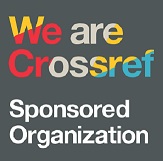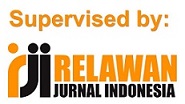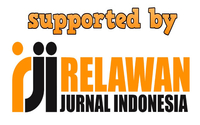DESIGN THINKING APPROACH IN TRANSLATING BANYUMAS TOURISM TEXTS
Abstract
The research aims to identify the students’ translation quality in translating Banyumas tourism texts. Moreover, this research tries to find out the effect of design thinking approach in translation class. This research was conducted by applying descriptive qualitative method. In other words, this research describes the effect of design thinking approach to the students’ translation by dividing students of English Diploma Study Program, Universitas Jenderal Soedirman enrolling on Translation Indonesian-English class into two classes. Class A uses design thinking approach in translating the texts, while class B does not. The students focus on translating Banyumas tourism texts. After the students translate the texts, the researchers and raters do a focus group discussion to check and rate their translation quality in terms of accuracy. The result shows that the translation quality of class A is better than that of class B. It can be seen from the accuracy point of class A which is 2.95 meanwhile, class B has 2.90 for its accuracy. This proves that design thinking approach is suitable to teach translation.
Keywords
Full Text:
PDFReferences
Carroll, M., Goldman, S., Britos, L., Koh, J., Royalty, A., & Hornstein, M. (2010). Destination, Imagination and the Fires Within: Design Thinking in a Middle School Classroom. International Journal of Art & Design Education, 29(1), 37–53.http://www.iimagineservicedesign.com/wp-content/uploads/2015/08/Design-Thinking-Concepts-at-School-K-to-12-Article-PDF.pdf.
Dam, R. F., & Teo, Y. S. (2018). 5 Stages in the Design Thinking Process. https://www.interaction-design.org/literature/article/5-stages-in-the-design-thinking-process
Kim, H. (2017). Characteristics of Qualitative Descriptive Studies: A Systematic Review. ResNurs Health, 40(1), 23–42.https://www.ncbi.nlm.nih.gov/pmc/articles/PMC5225027/.
Koch, C. (2016). Introduction: The HPI-Stanford Design Thinking Research Program. In L. Plattner, Hasso, Meinel, Christoph, Leifer (Ed.),Design Thinking Research: Making Design Thinking Foundational (pp. 5–12). Springer. https://www.springer.com/gp/book/9783319196404
Kwek, S. H. D. (2011). Innovation in the Classroom: Design Thinking for 21st Century Learning.: StanfordStanford University.
Leifer, L. (2016). Manifesto: Design Thinking Becomes Foundational. In L. Plattner, Hasso, Meinel, Christoph, Leifer (Ed.),Design Thinking Research: Making Design Thinking Foundational (pp. 1–4). Springer. https://www.springer.com/gp/book/9783319196404
Liedtka, J. (2015). Perspective: Linking Design Thinking with Innovation Outcomes through Cognitive Bias Reduction. Journal of Product Innovation Management, 32(6), 925–938. https://doi.org/10.1111/jpim.12163
Nababan, H., Nababan, M., & Santosa, R. (2018). Translation Techniques and Their Impact on the Readability of Translated Bible Stories for Children. Humanus: Jurnal Ilmiah Ilmu-Ilmu Humaniora, 17(2). https://doi.org/10.24036/humanus.v17i2.102729
Nababan, M., Nuraeni, A., & Sumardiono. (2012). Pengembangan model penilaian kualitas terjemahan. Kajian Linguistik Dan Sastra, 24(1), 39–57.https://publikasiilmiah.ums.ac.id/xmlui/handle/11617/2220.
Pink, D. H. (2005). A Whole New Mind: Why Right-brainers Will Rule the Future. Riverhead.
Razzouk, R., & Shute, V. (2012). What Is Design Thinking and Why Is It Important? Review of Educational Research, 82(3), 330–348. https://doi.org/10.3102/0034654312457429
Santika, D., Nababan, M., & Djatmika, D. (2020). The Impact of Translation Techniques on the Accuracy of the Translation of Commissive Speech Acts’ Responses in Dark Matter Novel. Humanus, 19(1), 1. https://doi.org/10.24036/humanus.v19i1.102684
Sirkin, D. (2016). Improving Design Thinking Through Collaborative Improvisation. In L. Plattner, Hasso, Meinel, Christoph, Leifer (Ed.), Design Thinking Research Making Design Thinking Foundational (pp. 93–108). Springer. https://www.springer.com/gp/book/9783319196404
Sonalkar, N. (2016). Diagnostics for Design Thinking Teams. In L. Plattner, Hasso, Meinel, Christoph, Leifer (Ed.), Design Thinking Research Making Design Thinking Foundational (pp. 35–51). Springer. https://www.springer.com/gp/book/9783319196404
Sulaiman, Z., & Wilson, R. (2019). Translation and tourism: Strategies for effective cross-cultural promotion. Springer Nature Singapore Pte Ltd.
Wenzel, M. (2016). Globalized Design Thinking: Bridging the Gap Between Analog and Digital for Browser-Based Remote Collaboration. In L. Plattner, Hasso, Meinel, Christoph, Leifer (Ed.), Design Thinking Research Making Design Thinking Foundational (pp. 15–33). Springer. https://www.springer.com/gp/book/9783319196404
Willis, J. (1996). A flexible framework for task-based learning An overview of a task-based framework for language teaching.Oxford, Prabhu 1987, 52–62. http://www.intrinsicbooks.co.uk/title_by_title/framework.html
Yulianita, N. G., Nababan, M., & Djatmika, D. (2018). The Acceptability of Religious Terms Translation in the Complete Idiot’s Guide to Understanding Islam.Lingua Cultura, 12(2), 111. https://doi.org/10.21512/lc.v12i2.3999
Zhao, Y. (2009). Catching Up or Leading the Way. ASCD.
DOI: https://doi.org/10.30743/ll.v4i2.2973
Refbacks
- There are currently no refbacks.
Fakultas Sastra
Universitas Islam Sumatera Utara (UISU), Medan
Jl. Sisingamangaraja Teladan Medan 20217
Telp. (061) 7869911, e-mail: language_literacy@sastra.uisu.ac.id









